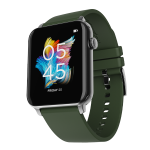In today's digital landscape, where every millisecond counts and user experience reigns supreme, monitoring the performance of your applications and infrastructure is paramount. Synthetic monitoring, a proactive approach to monitoring, allows you to simulate user interactions with your applications from various locations and devices, providing valuable insights into performance and availability. Among the plethora of tools available, New Relic stands out as a comprehensive solution for synthetic monitoring. In this guide, we'll delve into the intricacies of setting up and optimizing synthetic monitoring in New Relic to ensure seamless application performance and user satisfaction.
Understanding Synthetic Monitoring
Synthetic monitoring involves simulating user interactions with your applications to mimic real-world scenarios and detect performance issues before they impact actual users. It enables you to monitor critical transactions, such as login processes, checkout flows, or API endpoints, from different geographical locations and devices. By continuously running these synthetic tests, you gain visibility into response times, availability, and functionality, allowing you to identify and resolve issues proactively.
Getting Started with New Relic SyntheticsAccount Setup:
Begin by signing up for a New Relic account if you haven't already. Navigate to the Synthetics tab within your New Relic account dashboard to access the synthetic monitoring features.
Creating Monitors:
In New Relic Synthetics, monitors represent the tests you'll run to simulate user interactions. Create a new monitor by specifying the type (Simple Browser, Scripted Browser, or API Test), target URL, and test locations.
Configuring Test Settings:
Customize your monitor settings based on your requirements. Set up alert conditions to receive notifications when performance thresholds are breached.
Running Tests:
Once configured, run your tests to verify that they're accurately simulating user interactions and capturing relevant performance metrics.
Optimizing Synthetics MonitoringScripted Browser Tests:
For complex user flows or interactions involving dynamic content, consider using Scripted Browser tests. Write JavaScript code to navigate through web pages, interact with elements, and validate responses, providing a more comprehensive assessment of your application's performance.
Test Frequency:
Adjust the frequency of your synthetic tests based on your application's usage patterns and criticality. High-traffic applications may require more frequent tests to ensure timely detection of issues.
Geographical Coverage:
Distribute your test locations strategically to emulate your user base's geographic diversity. Monitor performance from regions where your users are located to identify latency issues and ensure a consistent experience worldwide
Advanced Alerting:
Leverage New Relic's alerting capabilities to receive notifications via email, SMS, or integrations with collaboration tools like Slack or PagerDuty. Configure thresholds for key performance indicators to promptly address any deviations from normal behavior.
Integrations:
Integrate New Relic Synthetics with other New Relic products, such as APM and Infrastructure, to correlate synthetic monitoring data with real-time application and infrastructure metrics. This holistic view enables you to identify the root cause of performance issues more efficiently.
Best Practices for Effective Synthetics Monitoring:
Regular Maintenance: Periodically review and update your synthetic tests to reflect changes in your application's functionality or user experience. Keep scripts and configurations up to date to ensure accurate monitoring.
Collaboration and Documentation:
Foster collaboration between development, operations, and QA teams to align on monitoring requirements and objectives. Document test scenarios, expected outcomes, and troubleshooting procedures to streamline the monitoring process.
Performance Baselines:
Establish performance baselines for key transactions and endpoints to track deviations and trends over time. Use historical data to identify performance patterns and proactively address potential bottlenecks
Continuous Improvement:
Treat synthetic monitoring as an iterative process aimed at improving application performance and user satisfaction. Analyze test results, identify areas for optimization, and implement changes iteratively to enhance the overall user experience.
Conclusion
Effective synthetic monitoring is essential for ensuring the optimal performance and availability of your applications in today's digital landscape. By leveraging New Relic Synthetics, you can simulate user interactions, detect performance issues proactively, and deliver exceptional user experiences. By following the guidelines and best practices outlined in this guide, you can harness the full potential of synthetic monitoring to



You must be logged in to post a comment.